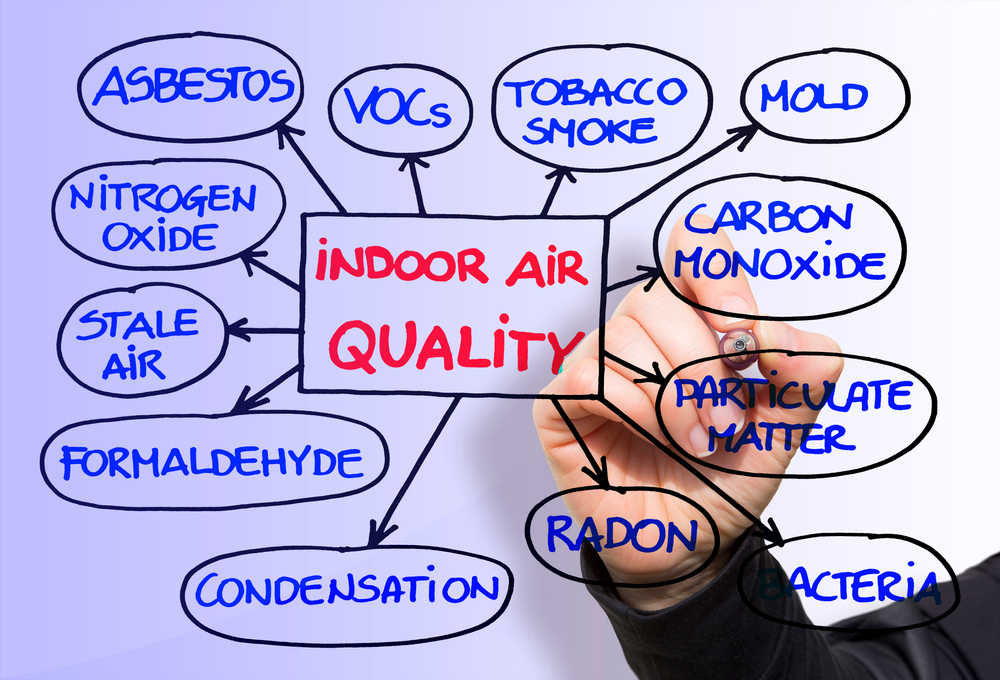
Is Your Indoor Air Quality Making You Sick? Signs and Solutions in Woodbine, KS
May 13, 2024 5:14 pm Leave your thoughtsIs your home air quality making you sick? This is a question that many homeowners may not consider, but the truth is that indoor air quality plays a significant role in our overall health and well-being. Poor air quality can lead to a variety of health issues, including respiratory problems, allergies, and fatigue. In this blog post, we will explore the signs of bad air quality in your home and provide solutions to help you improve the air you breathe.
Signs of Bad Air Quality in Your Home
There are several indicators that may suggest your indoor air quality is poor. If you experience any of the following signs, it may be time to address the air quality in your home:
1. Persistent Allergies or Respiratory Symptoms:
If you or your family members suffer from frequent allergies, asthma attacks, coughing, or congestion while indoors, it could be a sign of poor air quality. Dust, pet dander, pollen, and other airborne particles can accumulate in your home and trigger allergic reactions or respiratory problems.
2. Mold or Mildew Growth:
The presence of mold or mildew in your home is a clear indication of poor air quality. Mold thrives in damp, humid environments and can release spores that can aggravate respiratory issues and cause allergic reactions. If you notice mold or musty odors, it is important to address the source of moisture and remove the mold promptly.
3. Stale or Stuffy Air:
If your home feels stale, stuffy, or musty, it could be a sign of poor ventilation and indoor air quality. Lack of proper ventilation can trap pollutants, odors, and moisture indoors, leading to discomfort and health issues. Opening windows, using air purifiers, and maintaining HVAC systems can help improve air circulation and freshness.
4. Excessive Dust and Dirt:
An accumulation of dust, dirt, and debris throughout your home is a common sign of poor air quality. Dust particles can contain allergens, pollutants, and contaminants that can circulate in the air and affect your respiratory health. Regular cleaning, dusting, and vacuuming can help reduce dust buildup and improve air quality.
Solutions for Improving Indoor Air Quality
Fortunately, there are several steps you can take to improve the air quality in your home and create a healthier environment for you and your family. Consider implementing the following solutions to address poor indoor air quality:
1. Maintain Cleanliness:
Regular cleaning is essential for keeping indoor air quality at its best. Vacuum carpets, rugs, and upholstery frequently to remove dust, pet dander, and other allergens. Dust surfaces, wash bedding, and clean air vents to reduce the accumulation of particles that can affect air quality.
2. Control Humidity Levels:
Maintaining optimal humidity levels in your home can help prevent mold growth and improve air quality. Use dehumidifiers in damp areas, such as basements and bathrooms, to reduce moisture levels. Proper ventilation, like exhaust fans in kitchens and bathrooms, can also help regulate humidity and prevent condensation.
3. Invest in Air Purifiers:
Air purifiers are effective tools for removing airborne particles, allergens, and contaminants from the air. Consider investing in a high-quality air purifier with HEPA filters to capture and trap pollutants, such as dust, pollen, pet dander, and mold spores. Place air purifiers in commonly used rooms to improve air quality throughout your home.
4. Ensure Proper Ventilation:
Proper ventilation is essential for circulating fresh air throughout your home and preventing the buildup of indoor pollutants. Open windows regularly to allow for air exchange and use exhaust fans in kitchens and bathrooms to remove cooking fumes, odors, and excess moisture. Consider installing an energy recovery ventilator (ERV) or heat recovery ventilator (HRV) to improve ventilation efficiency while maintaining energy savings.
5. Schedule HVAC Maintenance:
Regular maintenance of your heating, ventilation, and air conditioning (HVAC) system is crucial for ensuring proper air circulation and filtration. Change air filters as recommended by the manufacturer and schedule professional HVAC inspections and cleanings to keep your system running efficiently. Clean ductwork and vents to prevent the spread of dust and contaminants throughout your home.
Summary
By taking proactive measures to address poor indoor air quality, you can create a healthier and more comfortable living environment for you and your family. Implementing solutions such as regular cleaning, humidity control, air purifiers, proper ventilation, and HVAC maintenance can help improve air quality and reduce the risk of respiratory issues and other health concerns related to poor air quality. Remember that your indoor air quality plays a crucial role in your health, so it is worth investing time and effort into creating a clean and safe indoor environment for yourself and your loved ones.
Need Heating and Cooling Services in Woodbine, KS?
Family- and locally owned and operated since 1996, we have built a reputation for delivering excellent workmanship, dependability, and professionalism to the residents and commercial businesses in the Woodbine and surrounding areas. Our team of highly skilled and knowledgeable technicians specializes in air conditioning and heating system installation, repair, and replacement; boiler and furnace maintenance; and mini-split and general HVAC system care. All of our technicians are fully licensed, bonded, and insured. Contact us today to learn more about what we can do for you!
Categorised in: HVAC service, Indoor Air Quality, Maintenance
This post was written by Writer
